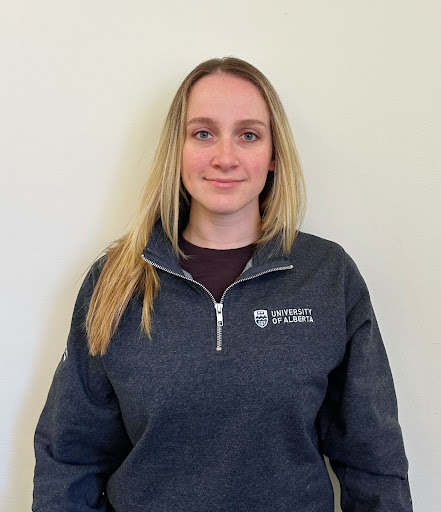Second-year MSc student in physical therapy has a plan to make physical therapy more accessible
Shirley Wilfong-Pritchard - 1 May 2024
 Erin Morgan grew up in Canmore, Alberta, where she discovered the sport of judo. In 2015, she moved to Montreal where she earned a coveted spot on the Canadian national judo team. During that time she also developed an interest in programming and began to learn basic coding.
Erin Morgan grew up in Canmore, Alberta, where she discovered the sport of judo. In 2015, she moved to Montreal where she earned a coveted spot on the Canadian national judo team. During that time she also developed an interest in programming and began to learn basic coding.
A sports injury in 2019 led Morgan to return to Alberta, where she earned a bachelor’s degree in exercise physiology from the University of Calgary and became a volunteer judo coach. She is now finishing her second year of a master’s degree in physical therapy from the University of Alberta’s Faculty of Rehabilitation Medicine.
We contacted Morgan to learn more about her PT journey and her plans for the future.
What led you to pursue an education in PT at the University of Alberta?
When I tore my ACL in 2019, it ended my competitive career in judo. I decided to return to Alberta, which meant leaving behind my coaches and teammates — and my identity as a high-performance athlete. My mental health was suffering. While in Calgary I began to see a PT (a U of A grad!) who took me through my rehab and helped me return to function. The care that I received from this person was effective and compassionate and had a positive impact on both my knee and my mental health.
Studying PT is important to me because I have experienced firsthand the difference that skillful care can make in a patient’s life.
Have you had to overcome any obstacles to pursue your education?
One of the biggest obstacles has been financial. Having been financially self-reliant since the age of 18, I had to choose between pursuing my athletic career or pursuing an education. As a result, it took me 11 years to complete my undergraduate degree and I’ve felt very ‘behind’ in life when compared to many of my peers.
Please tell us about your interest in developing apps for PT.
In the future, I plan to explore application development programs. I see a huge potential for apps to positively impact the world of physio. I have ideas for apps that allow clinicians to connect directly with patients to modify existing programs without the need to come into the clinic. I hope this type of system will be a more flexible and accessible version of telehealth and will allow patients who live in rural areas more access to care in the comfort of their homes.
I also see the potential for apps to positively impact physiotherapy equipment. One example is an app to program prostheses to adapt the available range and resistance to facilitate different activities like running, walking or biking.
As a second-year MSc PT student, what has been your favourite or most rewarding learning experience so far?
The most rewarding part of the program so far has been my most recent clinical placement. I was at a private practice in Lethbridge and my clinical instructor gave me a tremendous amount of autonomy to work with patients while still ensuring that everyone was safe. While the placement was only six weeks long — not enough time to see resolution for most patients — I was able to develop a rapport with many patients and experience how rewarding it is to be able to make a positive impact in their lives.
What do you find the most challenging?
The most challenging part of the program is seeing patients whose conditions are beyond help. As a future health-care provider, I want to be able to help every patient, but it’s difficult when a patient's rehab potential is very limited.
What do you plan to do after you graduate? What impact do you hope to make in the PT field?
After graduation, I plan to take a few months off to travel, spend time with friends and family, and plan my wedding.
As it relates to my career, I plan to continue my education in application development and find a role in a clinical setting that will allow me to identify areas of practice that would benefit from technological interventions. I hope to integrate my interest in programming and knowledge of physiotherapy in a way that will allow clinicians to have an easier time providing high-quality care to their patients and ultimately contribute to better patient outcomes.